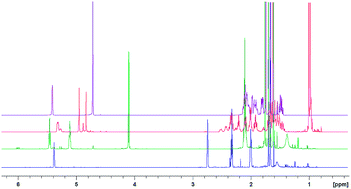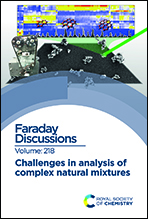Challenges in the decomposition of 2D NMR spectra of mixtures of small molecules
Abstract
Analytical methods for mixtures of small molecules require specificity (is a certain molecule present in the mix?) and speciation capabilities. NMR spectroscopy has been a tool of choice for both of these issues since its early days, due to its quantitative (linear) response, sufficiently high resolving power and capabilities of inferring molecular structures from spectral features (even in the absence of a reference database). However, the analytical performances of NMR spectroscopy are being stretched by the increased complexity of the samples, the dynamic range of the components, and the need for a reasonable turnover time. One approach that has been actively pursued for disentangling the composition complexity is the use of 2D NMR spectroscopy. While any of the many experiments from this family will increase the spectral resolution, some are more apt for mixtures, as they are capable of unveiling signals belonging to whole molecules or fragments of it. Among the most popular ones, one can enumerate HSQC-TOCSY, DOSY and Maximum-Quantum (MaxQ) NMR spectroscopy. For multicomponent samples, the development of robust mathematical methods of signal decomposition would provide a clear edge towards identification. We have been pursuing, along these lines, Blind Source Separation (BSS). Here, the un-mixing of the spectra is achieved relying on correlations detected on a series of datasets. The series could be associated with samples of different relative composition or in a classically acquired 2D experiment by the mathematical laws underlying the construction of the indirect dimension, the one not recorded by the spectrometer. Many algorithms have been proposed for BSS in NMR spectroscopy since the seminal work of Nuzillard. In this paper, we use rather standard algorithms in BSS in order to disentangle NMR spectra. We show on simulated data (both 1D and 2D HSQC) that these approaches enable us to accurately disentangle multiple components, and provide good estimates for the concentrations of compounds. Furthermore, we show that after proper realignment of the signals, the same algorithms are able to disentangle real 1D NMR spectra. We obtain similar results on 2D HSQC spectra, where the BSS algorithms are able to successfully disentangle components, and provide even better estimates for concentrations.

- This article is part of the themed collection: Challenges in analysis of complex natural mixtures


 Please wait while we load your content...
Please wait while we load your content...